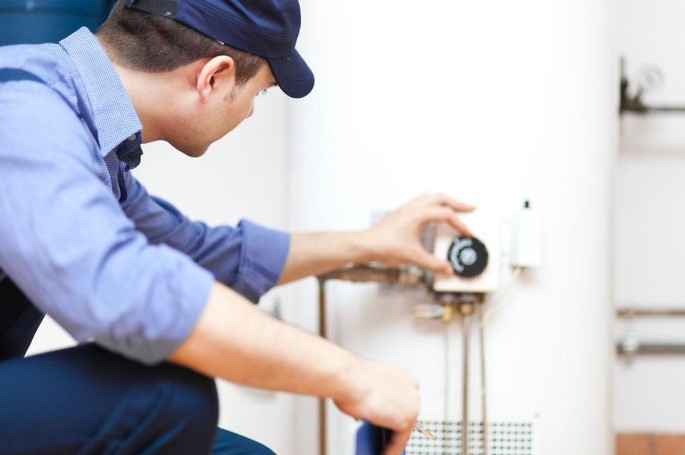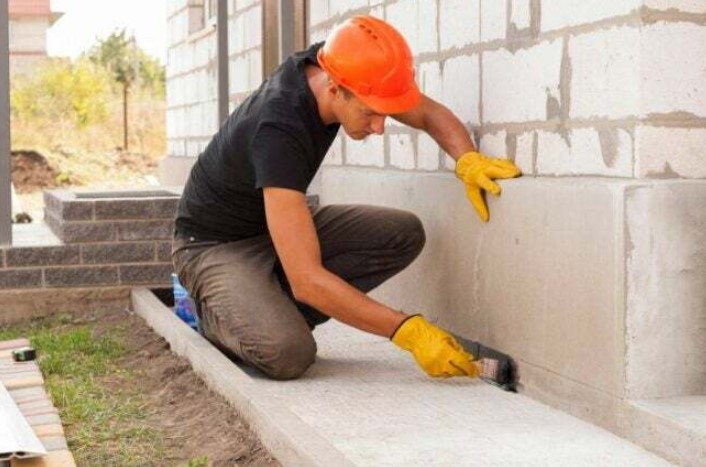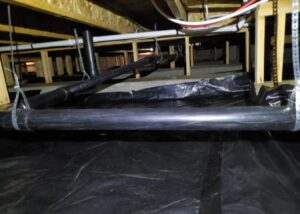Water Heater Basics: Types, Parts and How They Work

Every home needs hot water for bathing, cleaning, or other house chores. And that’s why every household has a water heater of some sort. These essential appliances deliver hot water supply for all kinds of household needs.
For machines that are used on a daily basis, such as water heaters, it’s always beneficial for homeowners to have a basic knowledge of how they work, how they’re built, and how to maintain them properly.
In this article, you’ll learn about different types of water heaters, their parts, and how they work.
Conventional Tank Water Heaters
This type of water heater has a tank that holds the water for heating.
This means that the capacity of the tank determines how much hot water you will have available at one time. The tank is insulated so that when the water is heated, it stays warm until it is needed.
The conventional tank water heater is the most common type used in family households. It also features two valves for pressure and temperature control. The best thing about the tank is that it is affordable and easy to install.
Tankless Water Heaters
What’s different about these types of heaters is that they have no tank. They have super-heated coils filled with water that heat water instantly when needed.
Tankless water heaters are preferred by bigger families that need a large amount of water at once on a daily basis. This heater will produce an endless amount of hot water with a flash.
One of the main reasons people prefer tankless water heaters is because they don’t lose any heat as they don’t store water, making them 80{1970a3eb400bca1bd6ad22f8acb643477587840db05f8f6236504a5b47727294} efficient. And, when the temperature of the water drops, they don’t heat the water continuously.
They’re durable and have a life expectancy of more than 20 years. To compare, other water heaters have less than 12 years of life expectancy.
Heat Pump Water Heaters
Heat pump water heaters are an innovative and effective solution to reduce energy consumption and electricity bills, they use 75{1970a3eb400bca1bd6ad22f8acb643477587840db05f8f6236504a5b47727294} of the air’s energy and process it into heat that heats water without unnecessary energy loss.
The heat pump system can be air/water, ground/water, or water/water. These systems can be used for heating or cooling. They are easy to manage and use, meeting all safety measures. This type of water heater is energy efficient and does not emit harmful gases.
In addition to receiving energy from the heat pump, modern heat pump water heaters also have a backup electric heater with which they can function as a standard water heater.
Solar Water Heaters
The operation of solar water heating collectors is based on the principle of converting solar energy into thermal energy, which makes it possible to obtain hot water at the required temperature.
The solar heat is stored in special tubes built into the vacuum collector. The inner surface of the tubes is covered with a special compound that allows them to concentrate the maximum amount of solar energy.
A solar water heater, often constructed in the form of solar water panels, is a device consisting of a collector mounted on the roof of a building and connected to a water storage tank.
Depending on the type of system, unheated water may circulate from the tank body through the collector to be heated directly.
Still, it could also be heated by a high-capacity heat exchange fluid that is heated in the collector and transfers its heat through pipes to the water in the tank.
One of the important advantages of these configurations is their ability to function fully even at low temperatures and low intensity of the solar energy flow. You can safely invest in a quality solar hot water system regardless of the climate in your area.
Parts of a Water Heater
Although every person has seen a water heater in their daily life, and it is generally believed to be a “simple” device, not everyone knows its components and how it functions.
Here are the main components of the water heater:
- Water tank. The body in which the water is heated. It is made of stainless steel in the case of expensive models or of iron, and the inner surface is enamelled to protect against the corrosive action of water;
- Insulation. To reduce heat losses, the water container is insulated from all sides with polyurethane foam, which is characterised by excellent insulation qualities;
- Cold water inlet and outlet. Although they are located at the bottom of the water heater, the cold water enters the bottom, and the hot water is drawn from the top through an internal pipe. There is only one reason, and it is called convection – the warm water rises up after it warms up. Therefore, if the water heater is partially filled with hot water, it is located in its upper part;
- Electric heater. Located in the lower part, where the cold water is;
- Thermostat. This is the device that turns off the heater when the preset temperature is reached;
- Coil-combined water heaters have one or several coils. They serve to heat water from other sources.
How Water Heaters Work
The most accurate example that can describe the water heater’s functioning is the thermos principle – once heated, the water retains its temperature for a long time. The point is that it takes technological time for this to happen. The desired heat is maintained thanks to the good insulation and the automatic on/off of the heating element. The heating time depends on the appliance’s capacity, the heater’s power, and the water’s temperature.
Energy Efficiency and Considerations
Mass consumers do not pay significant attention to the electricity consumption of their old electrical appliances and how much they would actually save after replacing them with new energy-efficient ones.
Users needn’t necessarily know all those complicated technical terms and standards.
However, it is important for them to know that it is mandatory for appliances on the market to have an energy efficiency label and information on parameter values related to energy efficiency accompanying the appliance.
The net volume of the water reservoir is important for the amount of hot water, but in practice, it is not the only factor.
In addition to the volume of the device, the amount of hot water depends on how quickly the incoming cold is mixed with the hot water already available in the water heater during use.
The bottom line is that investing in energy-efficient appliances is a matter of choice and necessity because it is important to everything and everyone around us.
Maintenance and Troubleshooting
Like all other products, various malfunctions are possible with water heaters, which can be delayed or avoided with proper maintenance of the appliance.
Some of the water heater problems can be successfully fixed at home. However, some things should not be underestimated, like overheating and water heater leakage.
Both are considered more dangerous and require professional intervention by a local plumber or other professional.
In order to check what is the cause of a malfunctioning water heater, you must first disconnect the device from the electrical supply. You should know that if you open the body of the water heater, your right to warranty service will be lost.
So do it if the warranty has expired, otherwise, seek the services of a professional. In order for the appliance to work stably, experts recommend installing an expansion tank to compensate for the additional pressure.
No matter what type and model of water heater you have, its proper operation and timely maintenance guarantee its long-lasting and efficient operation.
Conclusion
With so many options available on the market, it’s good to know how to find out which model of all types of water heaters is best for your home.
After reading this article, you are sure to know which type would be the best fit for your household and would do the best job for you. Before deciding, carefully consider your current and future heating and hot water needs.








